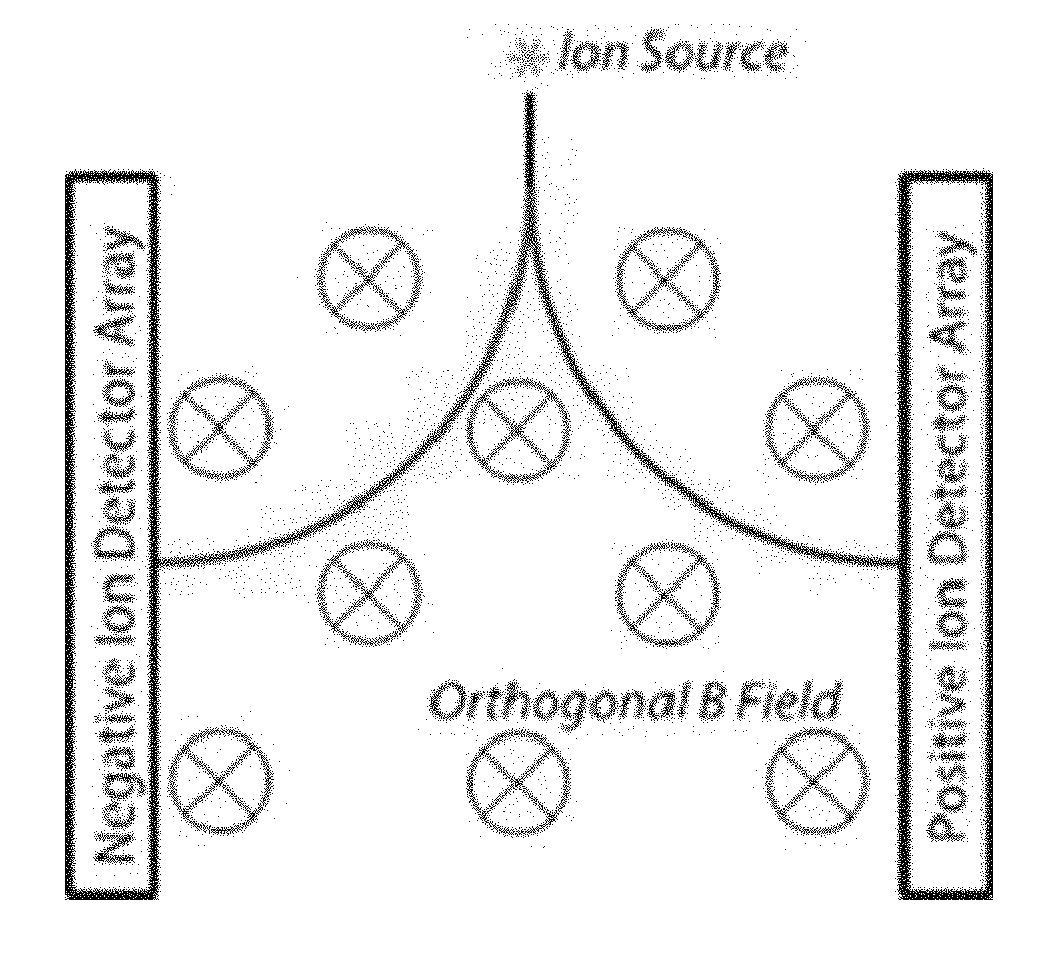Low Power Mass Analyzer and System Integrating Same For Chemical Analysis
- Summary
- Abstract
- Description
- Claims
- Application Information
AI Technical Summary
Benefits of technology
Problems solved by technology
Method used
Image
Examples
Embodiment Construction
[0003]The embodiments are directed to a very low power mass spectrometer (LPMS), with a zero-power mass analyzer, that is capable of high performance in a small form factor. Additional embodiments include chemical detection systems incorporating components and features of the LPMS.
[0004]Description of the Related Art
[0005]J. J. Thomson invented the first mass spectrometer in 1913, in 1932 Joseph Mattauch and Richard Herzog invented the double-focusing mass spectrograph, and in 1940 Alfred Nier made a single-focusing mass spectrometer using a 60-degree magnetic sector. Mass spectrographs have existed in variants to the Mattauch-Herzog and Nier-Johnson geometries, but there has been little to no development direct to making a small, compact, low-power arrayed instrument.
[0006]The increasing use of improvised explosives, the ever-expanding contraband threat matrix, and the complications that interferents and obscurants pose to detecting these materials has created a need for improved t...
PUM
 Login to View More
Login to View More Abstract
Description
Claims
Application Information
 Login to View More
Login to View More - R&D
- Intellectual Property
- Life Sciences
- Materials
- Tech Scout
- Unparalleled Data Quality
- Higher Quality Content
- 60% Fewer Hallucinations
Browse by: Latest US Patents, China's latest patents, Technical Efficacy Thesaurus, Application Domain, Technology Topic, Popular Technical Reports.
© 2025 PatSnap. All rights reserved.Legal|Privacy policy|Modern Slavery Act Transparency Statement|Sitemap|About US| Contact US: help@patsnap.com



